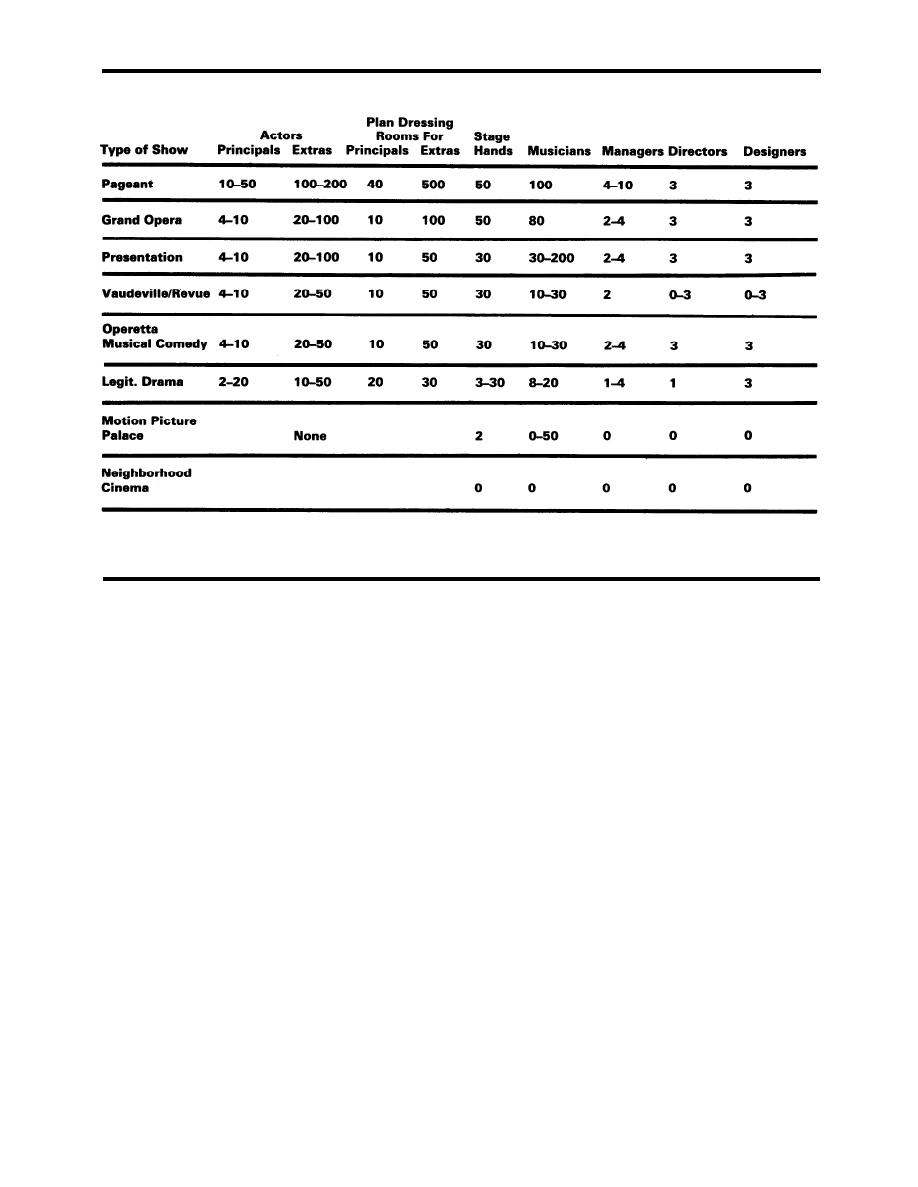
DG 1110.3.120
DESIGN GUIDE: MUSIC AND DRAMA CENTERS
JANUARY 1981
C H A P T E R 3: ENVIRONMENT
TYPICAL CAST AND CREW SIZES
T A B L E 3-11.1
benefit from support facilities and in what way.
sure to account for the anticipated rate of pro-
duction turnover, the ratio of professional tour-
Since the performance types dealt with in this
ing shows to those locally produced, the relative
Guide will consist of various blends of music and
emphasis of training, education and skill devel-
drama activity, it is useful to discuss backstage
opment, and the categories of use to which fu-
functions in terms of Music and/or Drama sup-
ture budgets may pertain. Since construction re-
port. Begin by identifying basic, minimum sup-
sources are limited either by dollars or space
allowances, some crucial facilities will be imple-
ports for a functioning facility, and enlarge on or
specialize them to answer further demands.
mented at the expense of others less vital.
B. CLASSlFlCATlON OF PERFORMANCE
SUPPORT
While the production needs of Drama are quite
different from those of Music, within each cat-
Allocation of limited resources among potential
egory basic needs are similar regardless of
support functions is aided by differentiating the
activities served. Three classes can be defined:
house capacity or specific presentation types
(choral vs. instrumental music, for example).
With the possible exception of scene handling
Performers' facilities are those that accom-
l
support (simple open stage sets vs. flyloft box
modate cast activity during scheduled per-
formances (including dress rehearsals).
sets and wagons), basic needs are also similar
for various stage forms.
Technical facilities accommodate activity ac-
l
cessory to scheduled performances.
The required quantity and quality of specific fa-
Preparatory facilities are for production and
cilities are related to program objectives and op-
l
maintenance activities prior to performances,
erating levels. MDC planners and designers
which in most cases continue year-round and
should refer to procedures of Chapter 2, and be
day-to-day.
3-65


 Previous Page
Previous Page
